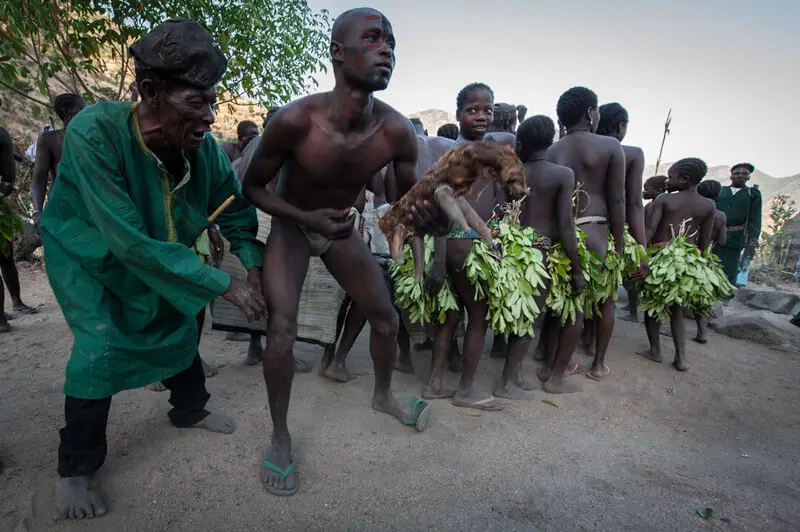If you are a millennial, you’ve probably only heard stories about your culture’s lifestyle before civilization.
You are fortunate to live in a time when access to clothing is convenient.
Regardless of your background, financial status, or living conditions, you haven’t had to walk the streets naked.
While nudity is considered pornographic and banned in most regions, some indigenous communities completely secluded from civilization don’t wear clothes.
While we are busy racing to pick up new fashion styles and trends, these indigenous people are content with wearing their own skin.
1. Taromenane Tribe
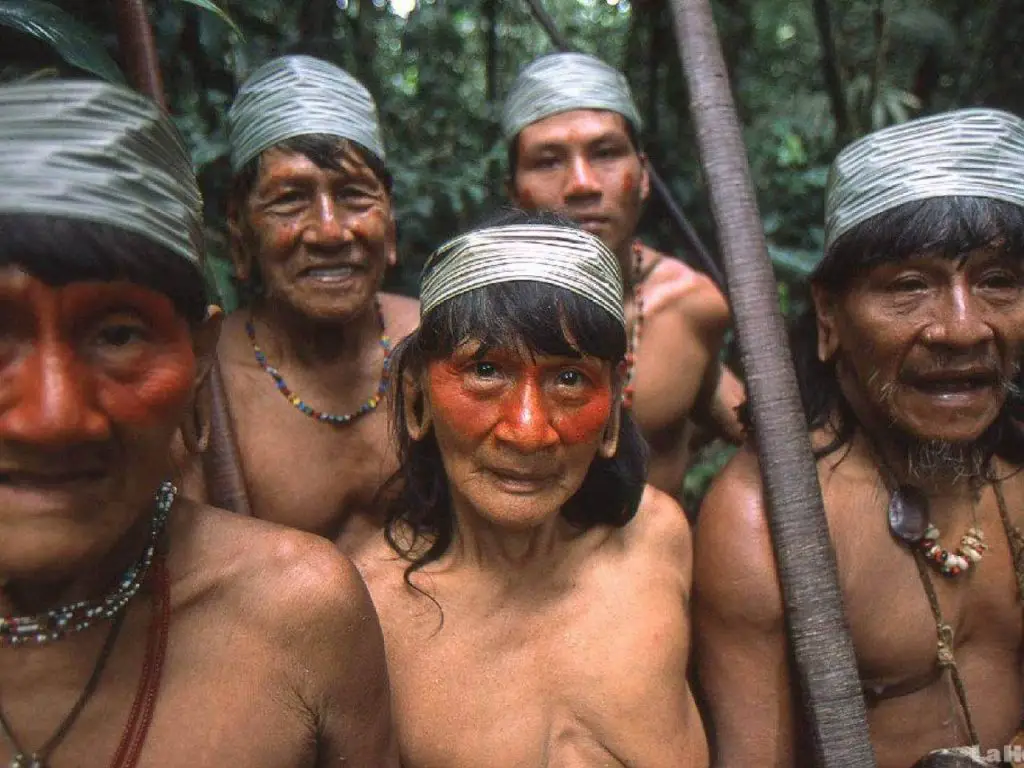
The Taromenane are an indigenous community living in voluntary isolation in Yasuni National Park in Ecuador.
Despite civilization being widespread, the Taromenane tribe still upholds their traditional lifestyle as nomads in the Ecuadorian Amazon Basin rainforest.
It is believed that there is an estimated 150-300 members of this tribe who remain uncontacted by the outside world.
Taromenane is one of the two indigenous tribes found in Ecuador.
The Taromenane clan is believed to be related to the Huaorani tribe.
Illegal logging and oil development in Yasuni National Park are the greatest threats this eastern Huaorani group has faced over the years.
2. Tagaeri Tribe
Tagaeri people are a member of the Huaorani people who separated in 1968, choosing a life of hunting and foraging as an uncontacted people.
They live in voluntary isolation, rejecting any contact with the rest of the world.
Their name, Tagaeri, comes from the name of one of the clan’s original members, Tagae.
He and a few families left the Huaorani group when missionaries first came to the Yasuni region.
Since then, the Tagaeri clan has had little contact with the larger Huaorani group.
When the outside world tries to establish a connection with the Tagaeri people, they respond violently by attacking them with spears.
Today, only a few Tagaeris are left, estimated to be 20-30.
Like their relatives, Taromenane, Tagaeri faces the danger of extinction from illegal loggers, smugglers, settlers, and oil companies moving into their area of residence.
3. Xingu Tribe
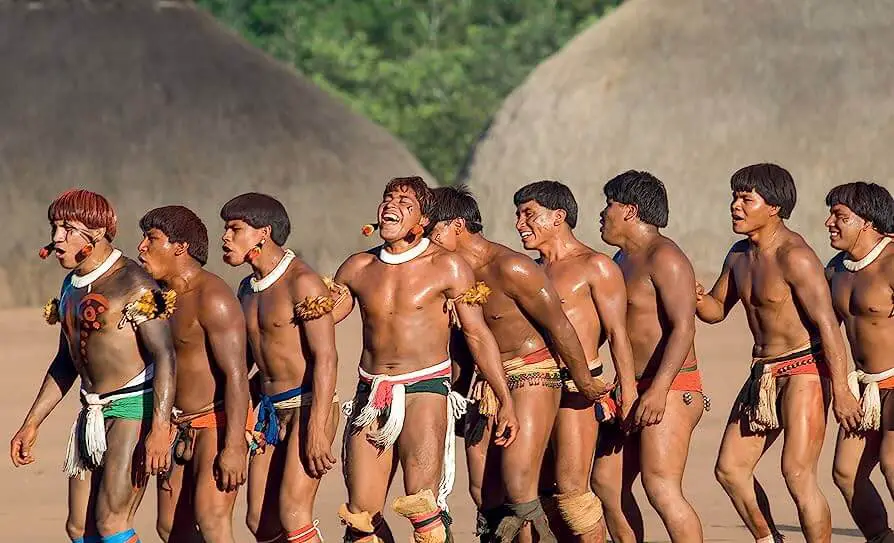
Xingu is the indigenous people of the Brazilian Amazon, residing in Xingu National Park.
The 14 Xingu communities are made up of red Indians who settled in Brazil, making this the largest Indian reservation covering over 10,000 square miles of rainforest region.
These tribes include Aweti, Kalapalo, Kamaiura, Kayapo, Kiukuro, Matipu, Mehinako, Nahukua, Suya, Trumai, Waura, and Yawalapiti, and make up a population of about 3,000 people.
Though they occasionally dress up in modern clothes, especially when they interact with communities from the modern world, Xingu cultural dressing is red powder from ground Urucum seeds and black ink from the Jenipapo fruit painted on their nude bodies.
They top that with feather hats on the head, colorful beaded necklaces, anklets, bracelets, and a thin vegetable fiber belt around the waist, while men wear a loincloth to cover their genitals.
Generally, both men and women are usually 80% nude.
4. Koma Tribe
The Koma tribe of Nigeria dwells in Northern Adamawa in the Atlantika Mountains, which share a border with Cameroun.
In 1961, the Koma people were recognized as Nigerian by the government.
The tribe is fully committed to its cultural beliefs and practices.
They still live in the Stone Age, rubbing rocks together to make fire and using salt produced in the hills for cooking.
Their traditional wear is leaves and animal skin, where women cover themselves with leaves around the waist, and men use loincloths.
However, these garments barely cover their genitals. Most of the time, the Koma people stay entirely naked.
5. Sentinelese Tribe
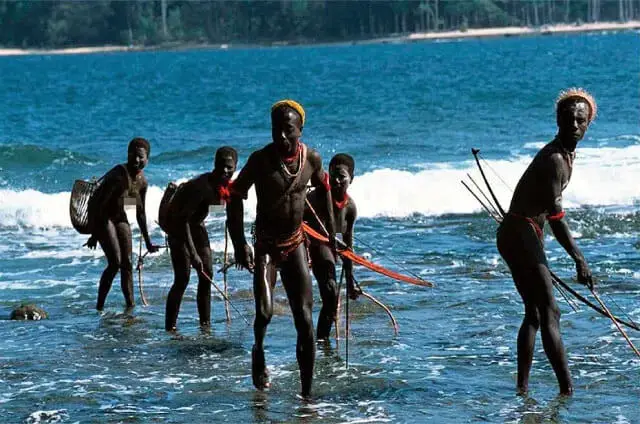
The Sentinelese are the most isolated people in the world.
They are found in North Sentinel, Andaman, a small patch of land between India and Myanmar.
Due to the contempt they have received from the outside world in the past, the Sentinelese people are highly hostile to any outsider to guard themselves.
They have enjoyed living in a thriving environment and good health for over 60,000 years.
Since they have had no contact with the outside world, their population cannot be estimated.
They are under Indian law, which to their favor, prohibits any outsiders from contacting them.
Since they have no access to anything from the modern world, the Sentinelese remain nude and can only rely on farm and animal produce to make traditional garments.
Sentinelese men are said to smear their faces with yellowish paste.
6. Korowai Tribe
Also known as Kolufo, the Korowai people are found in the rainforest provinces of South Papua and Highland Papua in Indonesia.
Their traditional wear is nudity, but men and women wear pieces made from fiber, cotton, or dry leaves around their waist.
The Korowai people are hunter-gatherers and horticulturists whose first contact with the outside world was in 1975.
Since they live in the forest, they build their traditional houses on treetops or on wooden poles high above the ground where there are fewer mosquitos and snakes.
Their houses are called Rumah Tinggi.
7. Dani Tribe
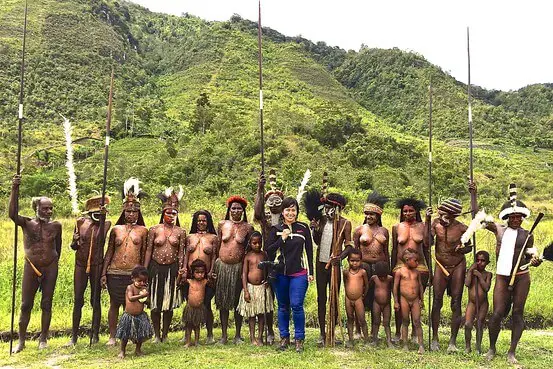
With an estimated population of around 90,000, Dani people live in Baliem Valley, Highland Papua, Indonesia.
They are the most known ethnic group of the Central Highlands of Western New Guinea.
The first contact with the group was in 1909 by Hendrikus Albertus Lorentz and his expedition team.
Since then, tourists visiting Baliem Valley have never crossed paths with the Dani people.
They are spotted walking partly naked; women stay topless, and men only wear thongs.
8. Zo’é Tribe
The Zo’é people live in the Amazon Rainforests located north of Brazil.
They first came into contact with the outside world in 1987 with missionaries’ visits from the New Tribes Mission to their land.
The government restricts access to the region to minimize the risk of disease after flu and measles nearly claimed the lives of the Zo’é tribe after missionaries arrived.
The community uses nut shells to make bracelets and shell fiber to make hammocks.
Cotton cultivated in their large gardens is also used to make body ornaments and hammocks.
Palm fibers and cotton are used to weave the slings they use to carry their babies.
Zo’é people wear no clothes or body painting.
The most significant aspect of this community is the lower lip piercing, where large plugs are inserted.
The ritual is performed when boys are 7 to 9 years old.
9. Sanuma Tribe
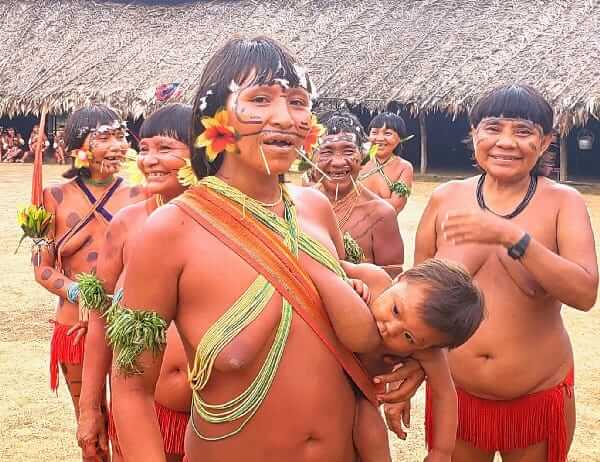
Sanuma are indigenous people on both sides of the Brazilian/Venezuelan border.
In Venezuela, they reside in the Caura River and Ventuari River basins.
The group is related to the Yanomami people, with a population of approximately 1,500.
The community is made up of nomadic farmers.
Sanuma is one of the tribes in the world that still uphold the culture of polygamous marriage.
Like the other uncontacted people in the Brazilian rainforest region, the Sanuma people do not wear clothes.
You may also want to check:
Closing Thought
Indigenous people face discrimination because of their way of life.
Though mostly uncontacted, these cultures have been unsuccessful in remaining hidden.
Attempts to open them up to the modern world are continuously made to introduce them to civilization.
As time goes by, these groups are slowly becoming extinct, either due to mortality or contact with the modern world.

